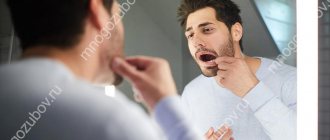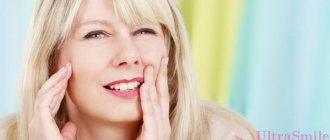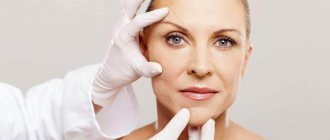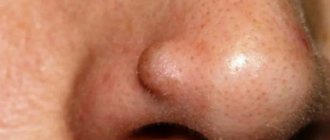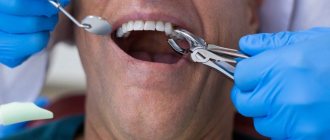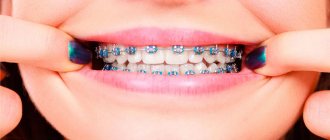September 22, 2020
Some people complain that their cheekbones are cramped. Typically, such a phenomenon cannot be classified as a specific diagnosis. Discomfort and pain in the cheekbones are, rather, a sign of various pathologies of the body. Which ones? Often we are talking about dental problems. The editors of the UltraSmile.ru portal have collected the most common of them in one article.
Some people complain that their cheekbones are cramped
Purulent infections in the mouth caused by advanced dental diseases
When the cheekbones and jaw are cramped, first of all, it is recommended to pay attention to the condition of the oral cavity. After all, an alarming symptom often indicates the following dental pathologies: acute periodontitis, gumboil, large cyst and granuloma, abscess, osteomyelitis and phlegmon.
During the development of these diseases, an inflammatory process occurs, severe swelling of the tissues, and pain and discomfort often spread to all nearby areas and do not have a clear localization. Unpleasant sensations manifest themselves even more strongly when pressing on a sore tooth, eating hard, hot and cold foods.
Reason 4: injuries to the jaw system
Fractures and dislocations due to accidents, falls or other circumstances (for example, playing dangerous sports) are unlikely to go unnoticed by you. Such injuries will be accompanied by severe pain, swelling, the formation of hematomas and bruises.
Even a small dislocation of a joint, injury to the spine or jaw can lead to unpleasant consequences: when you yawn, you will feel a cramp under your chin, spasms will naturally begin to bother you during and after eating (unpleasant muscle contractions will be especially noticeable when chewing solid food), and everything In addition, frequent migraine attacks will also occur.
Jaw injury may cause problems
During treatment and rehabilitation from injuries, pay attention to your diet and try to minimize the consumption of hard foods, as they cause incredible muscle tension when chewing.
With frequent muscle spasms for no apparent reason, it is important to exclude oncological diseases localized in the area of the maxillofacial apparatus and head. You should also pay attention to examining the esophagus in case you are worried about muscle spasms when eating sour or salty foods, or difficulties in swallowing food.
Eruption of third molar
So it’s not easy to immediately answer the question of why the cheekbones on the face are cramped. But if your wisdom tooth on the upper jaw begins to erupt, then it is very possible that this unpleasant phenomenon is associated with this. The fact is that third molars erupt very difficultly and for a long time, they have to pierce the jawbone, and their roots can touch the nerve endings, which leads to discomfort and cramps in the facial area.
The eruption of “figure eights” can cause this symptom
Against the background of the eruption of the “eight”, an acute inflammatory process can develop, when the gums above it become very swollen, red and sore. Often this is also accompanied by purulent pericoronitis, if bacteria and food debris penetrate under the mucosa.
Pain in the cheekbone area of the face can occur due to the fact that the “eight” does not have enough space on the jaw and it grows incorrectly, for example, it begins to oppress the seventh unit. As a result, this leads to compression of the roots of the “seven”, to the fact that it, in turn, begins to move towards neighboring teeth. Such movements provoke malocclusion, crowded teeth, dysfunction of the maxillofacial apparatus, and muscle spasms.
Tooth extraction and other surgical procedures
If, after visiting a dental office to remove a tooth and undergo large-scale surgical procedures in the oral cavity (multiple implantations, bone augmentation, vestibuloplasty), you have a headache, cramped cheekbones and jaws, and general weakness, this can be considered quite normal.
After complex removal, it can also reduce cheekbones
Firstly, you experienced nervous tension and stress. Secondly, they sat for a long time with their mouths open (especially if the procedure was complex), and accordingly, during this time the muscles became numb and tired. Thirdly, during the surgical intervention a traumatic effect was exerted on the tissue, after which a normal physiological reaction occurred. At the same time, unpleasant sensations in the first day after medical manipulations often radiate to the head, jaw, and face.
If after 1-3 days the cheekbones cramp and the jaw hurts, other alarming symptoms also appear and increase (swelling, bleeding, increased body temperature), then the reasons should be sought in postoperative complications: alveolitis, gumboil, abscess, phlegmon. In this case, you should immediately consult a doctor.
What to do if your jaw cramps?
The treatment method depends on the true cause of this condition. Therefore, you first need to undergo a diagnosis from a neurologist, therapist, dentist, surgeon, orthopedist and other specialists.
So, if the jaw is cramped for dental reasons, then the following methods are used:
- grinding teeth, using removable and non-removable orthopedic structures to correct malocclusion;
- carrying out orthodontic correction using braces;
- osteotomy of the jaw - surgical elimination of violations;
- splint therapy.
If the cause is a jaw injury, then it is first necessary to exclude its fracture or subluxation using x-ray diagnostics. Sometimes microtrauma can only be detected on CT scans. The patient is prescribed rest and cold for the first 2 days, the jaw is immobilized using bandages.
During the recovery period, the following physiotherapy procedures are used:
- reflexology using electropuncture, laser puncture, and ultrasonic puncture methods;
- exposure to an ultra-high frequency (UHF) electric field;
- myoelectric stimulation - the use of electrical current pulses to restore the activity of muscle fibers;
- magnetic therapy;
- dry heat;
- electrophoresis and ultraphonophoresis with the use of drugs (potassium iodide, hydrocortisone);
- physical therapy and massage (a set of exercises is described below).
With the development of infectious arthritis, antibacterial drugs and physiotherapy are used. When bone adhesions form, conservative treatment methods are prescribed at the first stage (phonophoresis with hydrocortisone, electrophoresis with lidase, potassium iodide).
If there is no effect, then they resort to surgical intervention, which is carried out in hospitals in the departments of maxillofacial surgery.
If the cause lies in bruxism, then it is necessary to undergo consultation and treatment with a neurologist and neuropsychiatrist. Also, to prevent premature tooth wear, you need to visit a dentist, who can recommend orthopedic treatment methods.
If the jaw cramps due to muscle spasms, then several treatment methods are used:
- medications (painkillers and antispasmodics, antidepressants and tranquilizers to relieve tension);
- physiotherapeutic treatment (magnetic therapy, reflexology, laser therapy, dry heat);
- to consolidate a positive result - massage, relaxation, myogymnastics.
If there is concomitant osteochondrosis, the neurologist may prescribe massage of the cervical-collar area, physical therapy, and physiotherapy. During the treatment period, in all cases, trauma to the jaw should be avoided: avoid rough food, do not open your mouth wide, and avoid intense sports.
Massage
Self-massage for diseases of the temporomandibular joint is carried out according to the following method:
- Using gentle circular movements, stretch the trapezius muscle at the level of the shoulders and base of the neck.
- Then, continuing the massage, slowly lower your hands along the spinal column as far as possible.
- Turn your head, stretch the sternocleidomastoid muscle with your fingers, first on one side, then on the other.
- Place the thumbs of both hands under the lower jaws and massage the masticatory muscle in a circular motion, while simultaneously kneading its upper part on the cheeks using the remaining fingers.
This complex allows you to relax your muscles. Afterwards, it is recommended to do the exercises described below.
Warm and cold
In the first day after injury, as well as in the presence of acute pain in the jaw, you can use cold compresses. To do this, use ice wrapped in a towel or plastic bottles with cold water.
This helps block the transmission of impulses along nerve fibers and reduce pain. A cold compress should be applied to the temporomandibular joint for 5-10 minutes. several times during the day.
To more quickly stop the inflammatory process, thermal procedures are used. To do this, you can use a heating pad or a towel soaked in hot water. The compress is applied to the sore spot for 15-20 minutes. Heat also helps relax tense muscles in the area.
Relaxation
Reduces cheekbones and jaw (the reasons may be harmless), often due to overstrain of the facial muscles. To eliminate this condition, you can use the following set of exercises (perform each type of movement 10 times):
- Lightly press the pads of your fingers against the temporomandibular joint. Gently move your jaw left and right.
- Then move your jaw back and forth. These movements should not cause discomfort.
- After this, make circular movements with your jaw, first in one direction, then in the other (5 approaches each).
- Close your teeth and lips, smile, then purse your lips, stretching them forward.
- Relax your lower jaw so that it goes down. In this case, you need to apply a little pressure with your fingertips in the lower part of the cheeks.
- Also, in a relaxed state, exhale air.
- Make a semicircle with your head, first in one direction, then in the other, stretching the neck muscles.
All exercises must be performed with a straight back. They help with muscle pain, tension and spasms of the chewing and facial muscles.
Drugs
The main groups of medications used for this disorder are described in the table below.
| Name | Main effect | Dosage for adults, mg per day | Average price, rub. |
| Drugs affecting neuromuscular transmission | |||
| Miolastane (Tetrazepam) | Regulation of the functions of the central and autonomic nervous system | 25-50 | 200 |
| Ixel (Milnacipran) | 50 mg 2 times | 1600 | |
| Fluoxetine | 20 | 80 | |
| Angioprotectors
| |||
| Venoruton | Improving metabolic and reparative processes in bone tissue, intraosseous circulation | 300 mg 3 times a day | 1300 |
| Troxevasin | 500 | ||
| Pentoxifylline | 200 mg 2 times a day | 300 | |
| Chondroprotectors | |||
| Structum | Improving metabolic processes in cartilage tissue, increasing its resistance to damaging enzymes | 500 mg 2 times a day | 1600 |
| Inoltra | 3.8 g 3 times a day | 4000 | |
| Honda | 0.5-1 g 3 times a day | 250 | |
| Vasodilators | |||
| Papaverine | Improving peripheral blood circulation, relieving facial muscle spasms | 0.02 g | 45 |
| No-shpa | 40-80 | 160 | |
| A nicotinic acid | 1% solution, 5-7 ml (intravenous) | 50 | |
| Nonsteroidal anti-inflammatory drugs
| |||
| Ketonal | Reducing inflammation in arthritis, arthrosis | 100-200 (topically, in the form of a gel) or orally 25 mg 2-3 times a day | 100 |
| Diclofenac | 70 | ||
If the pain is very severe, then Berchet (Egorov) blockades are used using a 1-2% solution of Novocaine (Lidocaine). They are given as injections once every 3 days.
Folk remedies
Among the folk remedies for this condition, the following sedative recipes are used to help relax the facial muscles:
- Valerian root tea. 1 tsp. chopped roots pour 1 tbsp. boiling water, leave for 10 minutes. and take as tea 2-3 times a day. This remedy is not recommended for people suffering from liver disease and pregnant women.
- Motherwort decoction. Pour 15 g of herb into 250 ml of boiling water, add sugar to taste and bring to a boil. Keep on fire for 5 minutes. Take 1 tbsp. l. 3 times a day before meals.
- Passionflower tea. Cut off the stem and leaves of the plant and wash them. Chop with a knife. The volume of grass should be 1 tbsp. (in a free state, without compaction). Pour 1 liter of water and put on fire. Bring to a boil and keep on the stove for another 20 minutes. Then remove from heat and strain. This decoction is taken 3 times a day, diluted with drinking water in a 1:1 ratio.
Hard foods that increase the load on the masticatory muscles (meat, sausages, coarse bread crusts, crackers, raw carrots, apples, cucumbers, etc.) should also be excluded from the diet.
When the cheekbones and jaw are cramped, it is necessary to conduct additional diagnostics that will reveal the true causes of this condition. They can be very diverse: from systemic connective tissue diseases to emotional stress. In some cases, surgery is required.
Malocclusion
When aching pain in the cheekbones of the face and jaw occurs on a constant basis (they always seem to be present in the general background), this may signal that you have a malocclusion. If abnormalities are not corrected for a long time and treatment by an orthodontist is not performed, this leads to asymmetric contraction of the muscles of the jaws and neck, and uneven distribution of the chewing load. The cheekbones and temples begin to shrink, headaches, a feeling of tension and discomfort in the face appear.
An incorrect bite can also lead to this problem.
“When I first got braces, when I put pressure on my teeth, at first there was such a sharp pain that it made my cheekbones cramp and brought tears to my eyes. True, as soon as the pressure disappeared, everything immediately returned to normal. During the first month, I probably felt tension all over my face and jaw, but my doctor said that this was normal and would pass soon. And indeed, gradually these sensations stopped bothering me, I got used to it!”
Renakona Elena, review from 32top.ru
Why do muscles cramp?
The cause of muscle spasm is often not easy to determine.
In a significant number of cases, we have to talk about idiopathic muscle contraction (i.e., there is no obvious cause of the spasm). Muscle cramps during sports
usually caused by excessive or unusual load on a muscle (muscle group), dehydration and loss of calcium and potassium through sweat, and improper training.
The fact that muscles cramp in sleep
, as a rule, is explained by poor body position during sleep. When we sleep, our body is generally relaxed, but certain muscle groups experience increased stress; a long stay without movement does not allow this load to be redistributed to other muscles, which can lead to muscle cramps.
Most susceptible to muscle spasms:
- athletes;
- pregnant women;
- elderly people (this is due to weakening of muscle tissue - muscle atrophy);
- small children (first 3 years of life).
Factors contributing to muscle contraction are:
- overweight;
- heat;
- intoxication of the body (in case of an infectious disease, alcohol intoxication, etc.)
- certain medications (for example, hormonal contraceptives);
- leg diseases and some other diseases (liver cirrhosis, diabetes mellitus).
Unsuccessful dental treatment and prosthetics
Why else do the cheekbones on your face shrink? From fillings and orthopedic structures installed in the oral cavity that do not correspond to the individual anatomical characteristics. In this case, again, the load is distributed incorrectly, certain areas are overstrained, the normal functionality of the maxillofacial apparatus is disrupted, muscle hypertonicity and even jaw trismus occurs.
The presence of orthodontic structures in the mouth can provoke a problem
To avoid the problem, you need to go to clinics where experienced doctors work, and also carry out comprehensive functional diagnostics (ideally, if digital!) immediately before treatment. All this allows us to create not only beautiful, but also the most convenient and comfortable restorations for the patient, which will eliminate the occurrence of additional problems and help correct the slightest pathologies and deviations in the functioning of the jaw.
Sometimes the cause of the problem is simply unskilled and too traumatic actions on the part of the doctor performing medical procedures. The specialist could give an incorrect injection of anesthesia, have too strong an effect on the surrounding tissues, or perforate the root or even the maxillary sinus during a particular procedure.
Bruxism or involuntary jaw clenching
When doctors explain to patients why the cheekbones on the face are cramped, many are surprised that the causes of the pathology may lie in bruxism. Although there is nothing unusual about this. This disease causes involuntary clenching of the jaws, overexertion, overload and spasms, pain and discomfort in the muscles.
Bruxism manifests itself in full glory while you sleep. But in the morning, many patients with this diagnosis feel tired, they have a headache and jaw pain, and there is a feeling that their teeth and cheekbones are cramping. A dentist will help you get rid of the problem by prescribing special mouth guards that relax your muscles while you sleep. But in order to cure the disease itself, it is recommended to undergo examination by a neurologist, since neurological causes often lead to the development of bruxism.
Bruxism can also cause discomfort
Bruxism is not exactly a dental disease. But in some cases it can be triggered by pathologies in the oral cavity: malocclusion, the presence of decayed teeth, poorly fitting crowns and fillings. Bruxism also leads to a number of dental problems if left untreated: cracking, pathological abrasion and hypersensitivity of enamel, deformation of artificial crowns and other prostheses.
Reason 3: neurological problems
Muscle cramps can quite easily be explained by psychosomatics, especially if you have been in a state of tension or fatigue for a long time, experienced stress, severe anger or fear, or were physically and mentally exhausted. The presence of mental disorders or inflammation of the ternary nerve (in particular applicable to the lower jaw) can also explain why the jaw cramps.
Stress can lead to facial muscle cramps
In this case, treatment should be prescribed by a psychotherapist or neurologist. It is possible that you will have to focus on taking sedatives, and it is also important to ensure peace of mind, get more rest, and get rid of disorders in any of their manifestations (unfavorable environment at work and at home)
Non-dental reasons
We looked at the main dental pathologies that may explain why the cheekbones on the face are cramped. But there are also many diseases and problems not related to teeth and the oral cavity. We list them below:
- injuries, bruises and blows received in the area of the face and maxillofacial apparatus: if the injury is very severe, for example, a fracture, then you may experience a feeling of cramping of the cheekbones and nausea,
- sedentary lifestyle and lack of physical activity: a number of researchers have come to the conclusion that with reduced physical activity, a person’s blood circulation is impaired, and this can lead to periodic cramping of the cheekbones, jaw and temples,
- hypoparathyroidism1: a disease caused by dysfunction of the parathyroid glands, leading to disruption of the metabolism of calcium and phosphorus in the body. It not only causes cramps in the jaws and cheekbones, but also causes muscle cramps in the lower and upper extremities,
- vegetative-vascular dystonia and other pathologies of the cardiovascular system,
- nervous tension, fear and stress, panic attacks,
- inflammation of the trigeminal and auricular nerves,
- ENT diseases: sinusitis, otitis, sinusitis,
- hypertensive crisis,
- frequent yawning,
- arthritis and arthrosis,
- osteochondrosis,
- oncology.
A blow to the jaw can cause a problem.
The problem does not always arise against the background of some serious pathologies, although, of course, its systematic appearance, or the persistence of a symptom for a long time, should be a reason to consult a doctor. Sometimes there is a feeling that your cheekbones are cramping after eating very acidic foods and drinks, because then salivation sharply increases and a reflex contraction of the jaw and parotid muscles occurs, which leads to a similar phenomenon.
Notice
: Undefined variable: post_id in
/home/c/ch75405/public_html/wp-content/themes/UltraSmile/single-item.php
on line
45 Notice
: Undefined variable: full in
/home/c/ch75405/public_html/wp-content /themes/UltraSmile/single-item.php
on line
46
Rate this article:
( 3 ratings, average: 5.00 out of 5)
prevention
- Farkhutdinova L.M., Ivanova M.A., Tunik V.F. Hypoparathyroidism: modern concepts and analysis of a clinical case // Archives of Internal Medicine. – 2016.
Expert “Advanced dental diseases often lead to ENT pathologies, since bacteria from the mouth easily move to adjacent organs, where they provoke inflammatory processes. Why, for example, do some patients have cramping cheekbones when they have diseased teeth in the upper jaw? The reasons may lie in damage to the sinuses and the development of odontogenic sinusitis. It arises from deep caries, pulpitis, cysts, periodontitis. Against this background, swelling of the surrounding tissues, numbness, pain and spasms appear, radiating to all parts of the face and jaw.” Dentist-therapist Elena Vladimirovna Orlova
Reason 1: dental problems
Admit it, do you visit the dentist on time and are you aware of all your problems with your teeth and gums? If not, then keep in mind that if they are present, the jaw cramps quite often; this manifestation, depending on the cause and location of the “problem,” can be accompanied by increased body temperature and even pain, which can be quite sharp, throbbing or pulling. So, why does the lower or upper jaw reduce:
- caries, pulpitis, periodontitis, gingivitis and periodontitis: untreated inflammatory processes in the mouth have never gone unnoticed for anyone. Bacteria that have settled in damaged elements of the dentition or on the gums will not stay in one place for long. In the absence of measures, they will not only destroy teeth, but will also continue to spread deep into the nerve endings, to the bone tissue of the jaw, provoking the appearance of pus, abscesses, osteomyelitis, phlegmon, body temperature, acute pain reaction and, of course, leading to what begins tighten your jaw. A feeling of discomfort in this case can manifest itself during mechanical influences on the tooth (during the process of eating and cleansing the oral cavity), during temperature stimuli, and even during sleep,
Pulpitis can cause problems - tooth extraction: this is a fairly serious operation, after which a completely natural reaction of the body is pain, which can radiate to the ears and head, which can cause the jaw to cramp. Ideally, all unpleasant symptoms should disappear within the first 3-5 days after tooth extraction, otherwise consult a doctor immediately,
- wisdom tooth cutting: This problem may also explain why your jaw is spasming. Be sure to consult a specialist to determine whether the third molar is dystopic or impacted (these two phenomena can occur simultaneously),
- malocclusion: in this state of affairs, you may develop a whole range of problems - headaches and jaw cramps, diseases of the gastrointestinal tract and dysfunction of the maxillofacial apparatus arise, problems with diction appear, posture is disturbed, facial asymmetry becomes noticeable, aesthetics are disturbed smiles, you cannot chew food fully,
Misaligned teeth lead to jaw problems - correction of the bite with braces or other orthodontic devices: in this case, if the jaw periodically cramps, there should be no concern. After all, such a sign indicates that the treatment is effective, the teeth and jaw joints are gradually shifting into a position that is still unusual for them. And this is the right path to achieving a positive result,
- tooth root fracture: due to injuries and falls, you could simply break a tooth. If in this case your jaw is cramped, the question of what to do should not arise - immediately go to the doctor.
The jaw can also cramp because a person suffers from bruxism. This problem is more of a neurological nature, but it needs to be solved in a complex manner, involving not only a neurologist, but also a dentist, since the enamel of the teeth of a patient with such a disease wears out very quickly due to nightly involuntary clenching of the jaws and grinding of teeth. Excessive pressure is also placed on the jaw joint and muscle corset, which can lead to severe overload.
Comments
My wisdom tooth is coming out because I feel a lump under my gum in that place. This seems to be causing my jaw to ache all the time lately. Is it really because of this that it will have to be removed now?
Dilyara (02.10.2020 at 16:15) Reply to comment
- Dear Dilyara, it all depends on the condition of the wisdom tooth. If it has the correct direction of growth, does not threaten neighboring elements of the row, and is not affected by caries and other dental diseases, then it does not need to be removed. However, it is recommended to monitor the process of its eruption over time. After all, it may also happen that it does not come to the surface at all or only partially, which often happens with third molars. See a doctor and take an x-ray to understand why the unpleasant symptom occurs, and then decide whether to remove or save.
Editorial staff of the portal UltraSmile.ru (06.10.2020 at 10:20) Reply to comment

